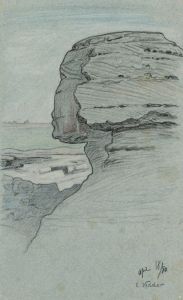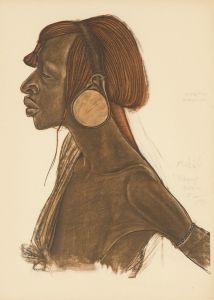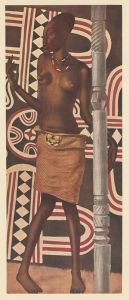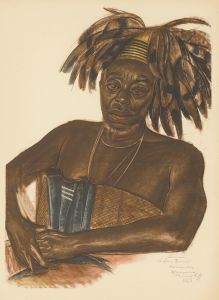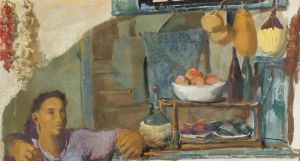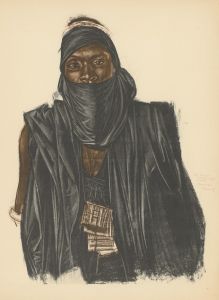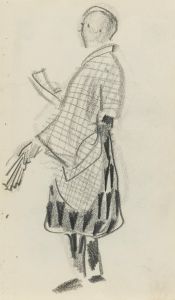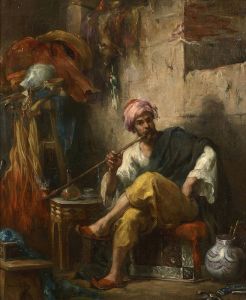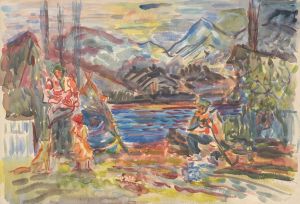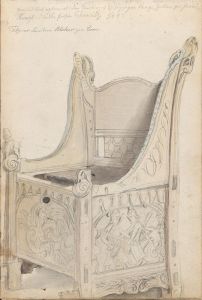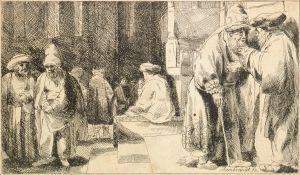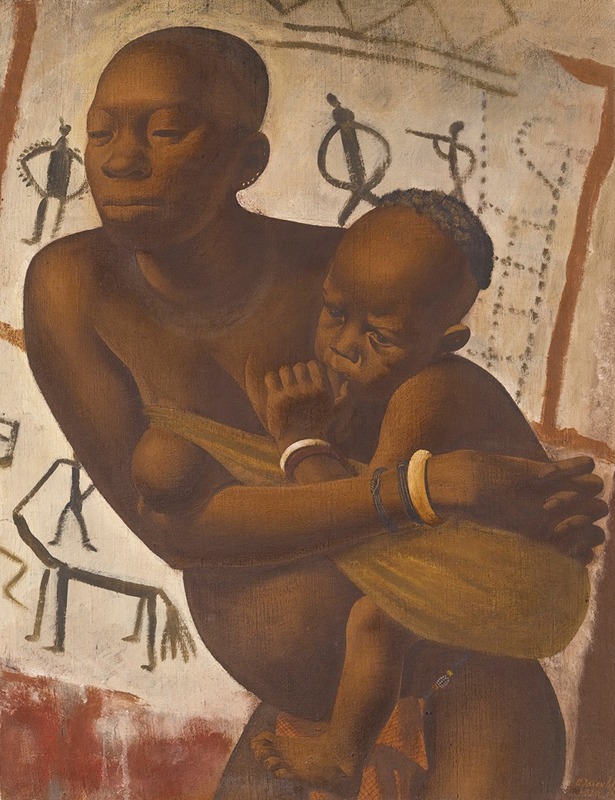
Banda Woman With Her Child
A hand-painted replica of Alexandre Jacovleff’s masterpiece Banda Woman With Her Child, meticulously crafted by professional artists to capture the true essence of the original. Each piece is created with museum-quality canvas and rare mineral pigments, carefully painted by experienced artists with delicate brushstrokes and rich, layered colors to perfectly recreate the texture of the original artwork. Unlike machine-printed reproductions, this hand-painted version brings the painting to life, infused with the artist’s emotions and skill in every stroke. Whether for personal collection or home decoration, it instantly elevates the artistic atmosphere of any space.
Alexandre Jacovleff, a Russian painter known for his association with the Ballets Russes and his extensive travels, created the artwork "Banda Woman With Her Child" during his participation in the Citroën-sponsored trans-African expedition known as the "Croisière Noire" or "Black Cruise" in the early 1920s. This expedition, which took place from 1924 to 1925, was a significant event aimed at exploring and documenting the African continent, both for scientific purposes and to promote the Citroën automobile brand.
Jacovleff was appointed as the official artist of the expedition, tasked with capturing the diverse cultures and landscapes encountered during the journey. His role was to provide a visual record of the people and places, which would later be used in exhibitions and publications to showcase the expedition's findings and experiences.
"Banda Woman With Her Child" is one of the many portraits Jacovleff created during this expedition. The Banda people, whom he depicted in this artwork, are an ethnic group from Central Africa, primarily residing in the Central African Republic. Jacovleff's portrayal of the Banda woman and her child reflects his interest in the human subjects he encountered, emphasizing their dignity and individuality.
The painting is characterized by Jacovleff's meticulous attention to detail and his ability to capture the essence of his subjects. His style combines elements of realism with a sensitivity to the cultural context of his subjects. In "Banda Woman With Her Child," Jacovleff uses a rich color palette and precise brushwork to depict the intricate patterns of the woman's clothing and the tender interaction between mother and child. This attention to detail not only highlights the aesthetic qualities of the painting but also serves as an ethnographic record of the Banda people's traditional attire and customs during the early 20th century.
Jacovleff's work from the "Croisière Noire" expedition, including "Banda Woman With Her Child," was later exhibited in Paris and other European cities, contributing to the Western understanding and appreciation of African cultures. These exhibitions were part of a broader trend in the early 20th century, where European artists and intellectuals showed a growing interest in non-Western cultures, often referred to as "primitivism." However, it is important to note that such portrayals were sometimes influenced by the colonial perspectives of the time.
Despite the potential for such biases, Jacovleff's portraits are often praised for their respectful and humanizing approach. His work provides valuable insights into the lives of the people he encountered, offering a glimpse into their world through the lens of an artist who was both an observer and a participant in the cultural exchanges of his time.
Today, "Banda Woman With Her Child" and other works by Jacovleff from the "Croisière Noire" expedition are appreciated not only for their artistic merit but also for their historical significance. They serve as a testament to the complex interactions between European explorers and the diverse cultures of Africa during the early 20th century, capturing moments of human connection amidst the broader narratives of exploration and colonialism.





